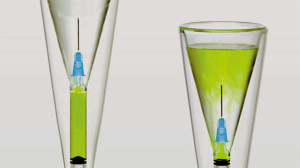Consider the Museum of Modern Art ‘s latest curatorial project, Design and Violence, as comparable to an experimental online course. It has an intriguing class description, set topics for each week, and a comments section akin to the discussion following a lecture (and like most classes, the success of this part depends on the quality and quantity of student participation).
The catalog description might read something like this: Designer Victor Papanek once said, “There are professions more harmful than industrial design, but only a very few of them.” Design and Violence will explore the concept of violence in design in the context of today’s world, and deconstruct the ambiguous relationship of design and violence. Violent design often arises as the byproduct of designers making commentary, protesting, and sometimes succumbing to ambiguous morality and mistakes. “Violence,” here, is defined as “the manifestation of the power to alter circumstances against the will of others and to their detriment.”
Like any other course would be, there’s a bit of novelty and ingenuity involved. The project is helmed by a curatorial staff and selected weekly “authors,” whose expertise ranges from science fiction (William Gibson) to journalism (John Hockenberry) to policy planning (Anne-Marie Slaughter). And the shelf life for the project is not a quarter, nor a semester, but TBD: It may last for several months, or even years. Having begun in October, it’s too early to tell.

Fountain, 1997, Diller + Scofidio; Photo: Michael Moran/OTTO
The project’s concept of violence is broad: While the curators have determined set categories — hack/infect, constrain, stun, penetrate, manipulate/control, intimidate, and explode — the violent objects that the project actually studies sometimes fall into more vague categories. There’s the fragrance made of sweat samples culled from cage fights. There’s also the Merrick Lamp — a simple IKEA design, exposed to a computer virus and conceived via a 3-D printer. (In its final version, it looks like a lamp stricken with elephantiasis.) Within the broad array of designs, many of these are objects that don’t necessarily inflict violence, but have been subject to it.



